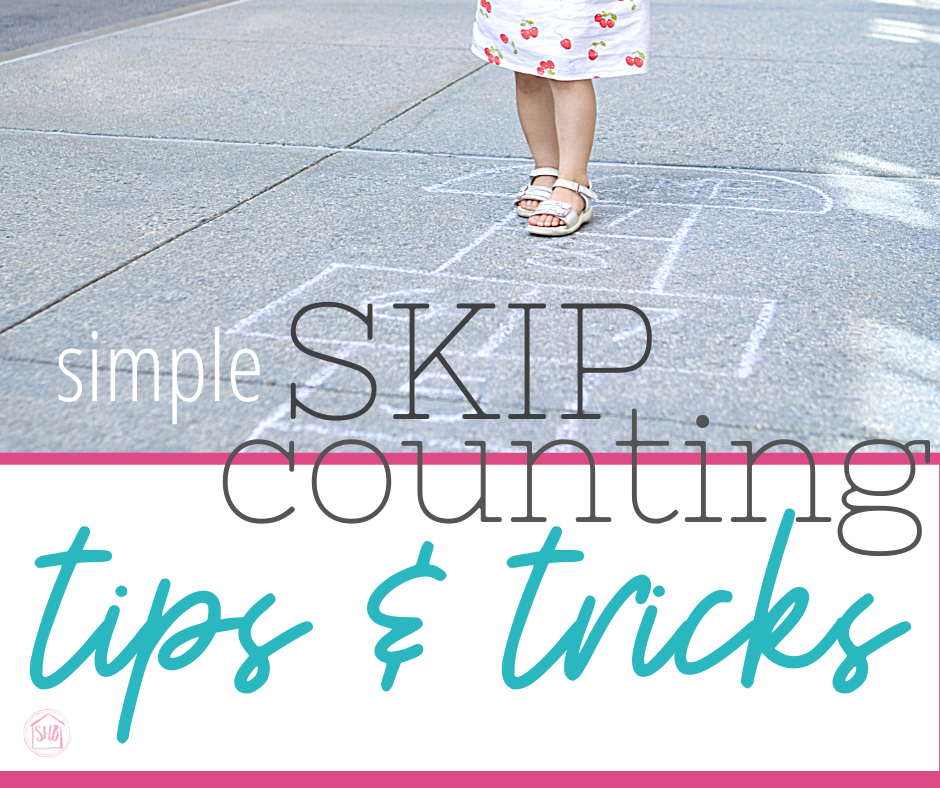
When we started homeschooling at the beginning of this school year, I had no idea what lay ahead of us. I had plans, yes. But there was no way to see what lay ahead. I compared it to looking out over an abyss and trying to determine what would happen.
But one day, we just began. We jumped into the homeschool thing. And we have had a BLAST!
My inadequacies with teaching are still abundantly clear, but we have discovered ways to get knowledge into our 5-year-old’s brain in vast quantities through memorization while still having lots of fun. We work our homeschool program around the Classical Conversations curriculum and it has been such a wonderful fit for her.3
One of the most interesting things CC teaches kids is memorization of basic math facts. A typical Classical Conversations year includes learning new information about history, science, English, and Latin. But every year, no matter what else is on the agenda, the math facts kids are exposed to are the same.
This post may include affiliate links. If you click and make a purchase based on my recommendation, I get a small remuneration at no extra expense to you. I only recommend things I use and believe to be a blessing.
They learn first to skip count through the numbers. For those who don’t know what skip counting is, it is counting by a specific number. For example counting by 2s is: 2, 4, 6, 8, 10, 12, 14, 16, 18, 20, 22, 24. We, as adults skip count by 2s, 5s, 10s, 20s on a regular basis. But the kids in CC learn to skip count up to by up to 15!!
And then they learn to skip count by squares and cubes!!!
You may be tempted to wonder what benefit this could possibly have to a five year old. And to be honest, I didn’t think it would benefit my five year old to straight memorize a sequence of numbers without context. But it is AMAZING what connections have been made in my little girl’s brain because she has worked with these numbers.
I thought I would share how we have worked through the skip counting portion of Classical Conversations math curriculum and share with you what worked to teach our 5-year-old.
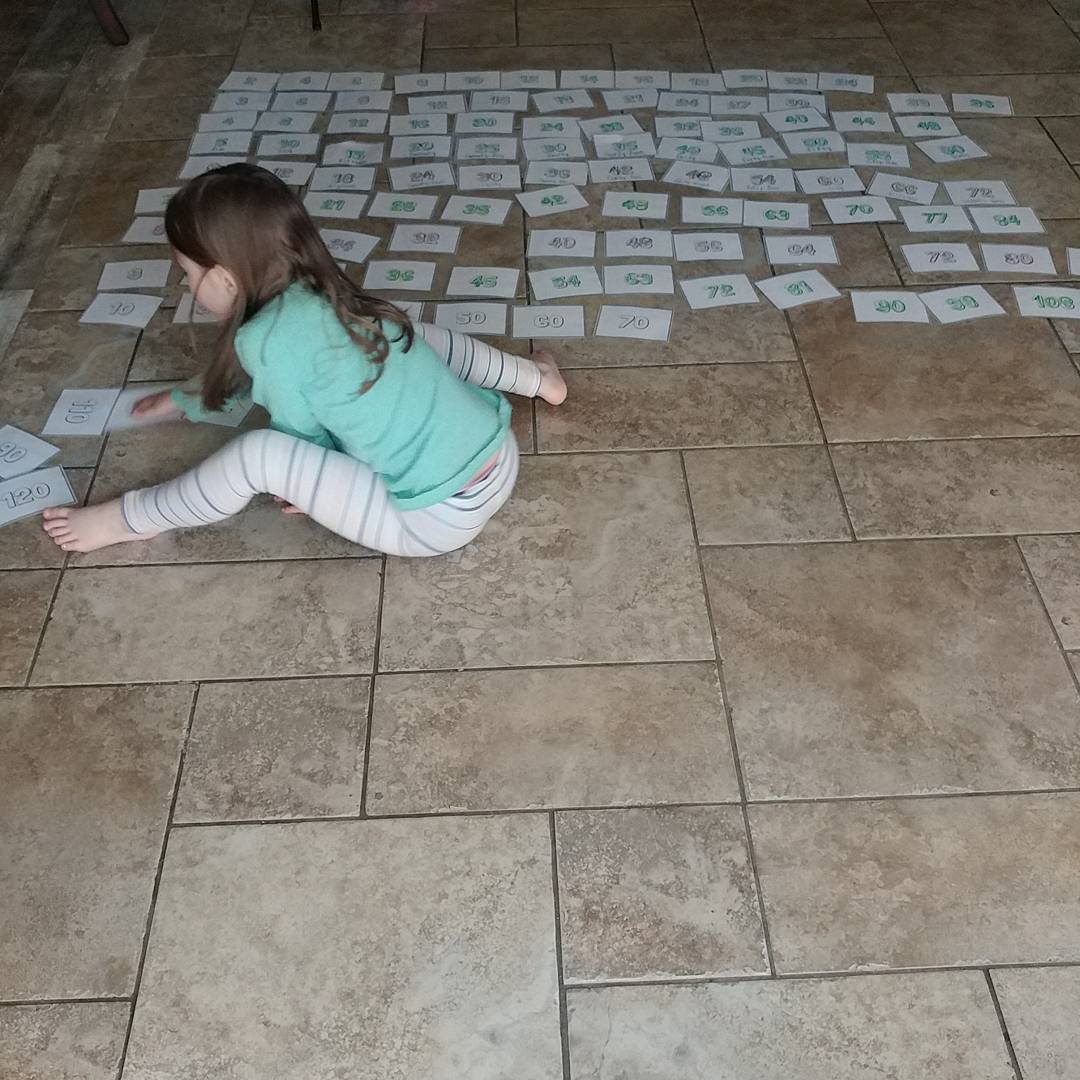
A Skip Counting Help
At the beginning of the year, I had a flash of inspiration for teaching the skip counting because I realized that kindergartners still struggle with number recognition, much less the counting. I created some number cards for our daughter to help with number recognition and number writing throughout the year.
I created them and then I realized how valuable they were! Suddenly, there were a thousand and one ways to use them. We used them throughout the year.
So I thought I would share them with you! And give you some ideas of simple ways to use them along with my tips for teaching a five year old skip counting. The link at the bottom of this post includes ALL of the skip counting for Classical Conversations (including the squares and cubes).

I created these skip counting cards with number recognition and writing in mind. The font was chosen for its usefulness in these two areas. I printed the cards out, cut them with my handy paper cutter (a must in our homeschool preparations) and laminated them using our basic laminator. I highly recommend doing the same thing in your homeschool. The cards will last longer! And since the math facts are the same every year, you will get TONS of use out of these cards.
Ideas for Teaching Skip Counting
As I said before, teaching skip counting to our kindergartener required a little bit different skill set than it likely would for an older kid. Her recognition of the relationship between the numbers is not as solid as an older elementary kid with a few years of math learning in her brain. So, we relied on some super simple methods for getting these numbers in her head.
Use the Songs
The songs Classical Conversations uses for skip counting are invaluable for teaching little ones. Since most of them are recognizable tunes for the kids, they learn them quickly without even thinking about it. We had been singing the 5s skip counting song for months before my kindergartener turned to me and said, “Hey, that sounds like Row, Row, Row Your Boat!”
With the songs as a foundation, using the skip counting cards I created helped us to recognize the places our girl was hearing the numbers wrong and correct them. When she first started singing the 4 song, she had a couple of the numbers mixed up. So she was singing the wrong number in the sequence. She already knew the tune, but putting the cards in front of her helped us to realize she was singing it wrong.
If you and your student have moved past skip counting and are ready to learn the multiplication facts, I recommend Musical Mama’s songs.
Create Number Chains
This is the most basic thing to do with the cards. It is the obvious reason I created them. Number chains help with the primary goal of our number teaching: recognition. Laying out the cards in a number chain, helps my learner to recognize the difference between the numbers. She still struggles with immediate recognition of a 6 and an 8. So laying them out in order helps.
The number chains are also perfect for teaching larger number recognition. The numbers in skip counting get pretty big. Having a visual cue for kids helps them to start to notice the tens, hundreds, and thousands places without actually teaching them. They can just start to see the bigger numbers have specific notations.
Number Mazes
We have a habit of telling our preschoolers that block numbers and letters are mazes for them to navigate. I created the number cards with the idea of making number mazes for the skip counting sequences. When we have the cards laid out in a number chain, I give G a dry-erase marker and ask her to work through the number mazes. We are still working on having her write from top to bottom and left to right. These simple number mazes help her with her number writing.
We sneak in some review at the end of this process by having her erase the cards in order. Repetition and review is the way to ensure the skip counting sticks.
Pretend to be Mixed-up
One of the most effective teaching tools for my little one is to have her be the teacher. I often pretend I just got everything out of order and I need help putting it all back in order. She falls for it every time and wants to help me get it right. I jumble up the sequences of the cards and tell her I got them out of order again.
She takes the cards from me and lays them out in order, singing and recognizing the numbers as she goes along. Once she has them all in order, she brings them back to me and I put a rubber band and sticky note on the stack, so I can “keep it straight.”
Ask for Help
On the same track as pretending to be mixed-up, I also often forget how the songs go. Really. I forget how some of the songs go (11 and 13 come to mind), but G knows the tunes. So, I will randomly tell her, I forgot how the song goes. If she needs a little bit of coaxing, I will start it out and let her tell me how to finish it. She loves that she knows something I don’t know. And she loves when the tables are turned and she gets to be the teacher.
Use Skip Counting Practically
As I said before, we use skip counting on a daily basis without even thinking of it. There are lots of practical applications for skip counting with our kindergartener. As these opportunities present themselves, I try to encourage skip counting together.
This is still a very hard concept for our kindergartener to see practically. So we are focusing on exposure at this point, not complete understanding. When we got home with our Halloween candy haul and sorted and counted the different kinds of candy we got, we introduced some simple skip counting to her. It kind of blew her mind.
When appropriate in our math school work, I also show her how I count using skip counting. She is starting to make a connection, but she still prefers to count the old-fashioned way.
Real Group Counting
On the topic of practical counting, I have also started introducing the concepts of group names to our learner. Simply stated, that is giving names to the groups for counting. It looks like this:
- counting 2s = counting pairs
- counting 3s = counting triplets
- counting 4s = counting quarters (money)
- counting 5s = counting hands – fingers (or feet – toes)
- counting 6s = counting half-dozens
- counting 7s = counting weeks
- counting 8s = counting spiders
- counting 9s = counting baseball (innings or teams)
- counting 10s = counting dimes
- counting 11s = counting soccer teams
- counting 12s = counting dozens
- counting 13s = counting baker’s dozens
- counting 14s = counting fortnights
- counting 15s = counting quarter hours
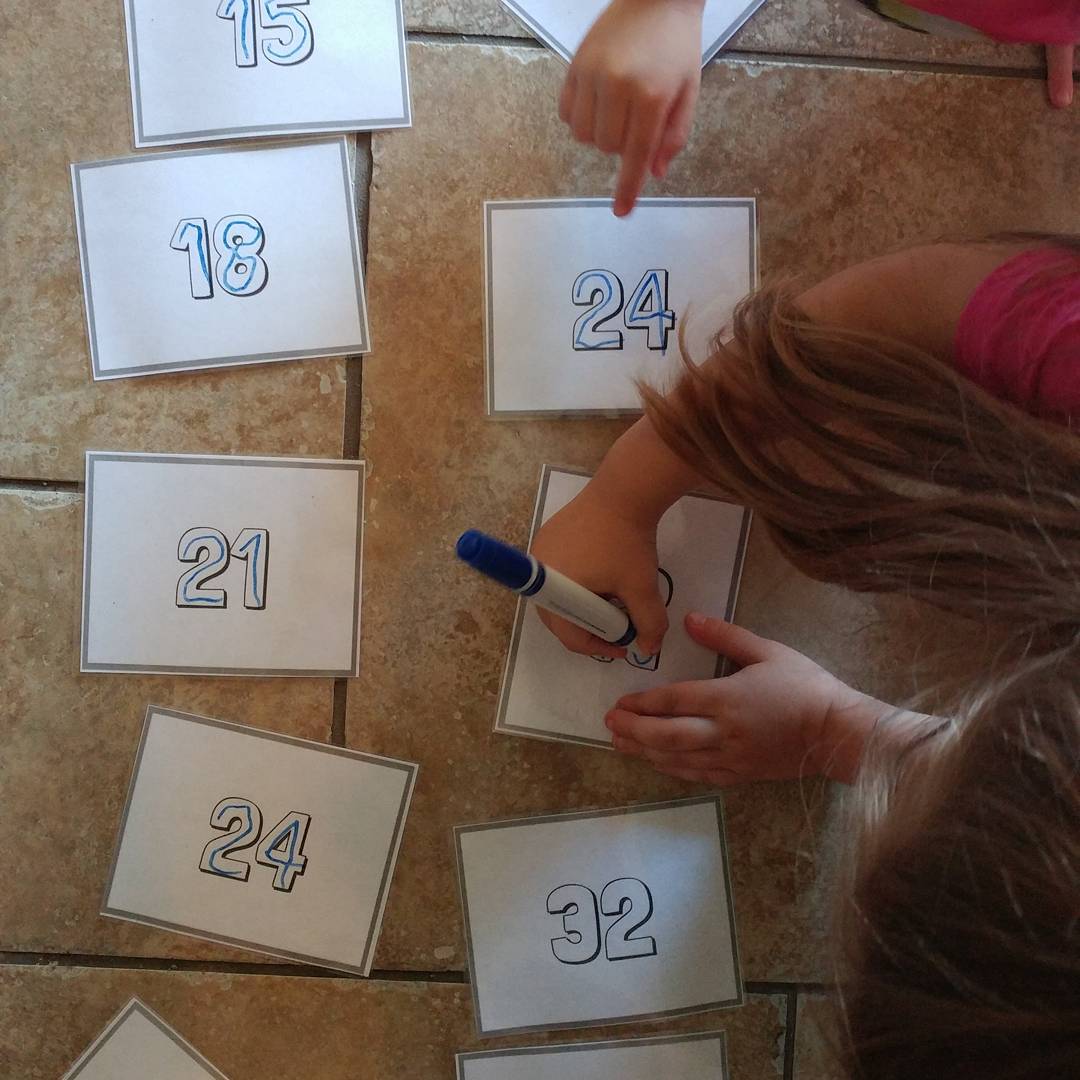
I hope these tips and these cards help you teach your students to learn how to skip count!
A NEW Skip Counting Help
I wrote this post so long ago now that it is a fun little walk down memory lane to look over it. We are still using all these tips to learn the skip counts with our third first year Classical Conversations student.
My little guy who has been to community days since his earliest days has learned much of the skip counting by osmosis. He knows the tunes and can sing most of the numbers naturally. And he is a puzzle LOVER!
So, I created a resource specifically for him this year – CC Cycle 3 Math + History Puzzles. He has loved them so much. Typically, he will sit next to me whilst I do my early morning Bible study and build the puzzles. They are perfect for him because he can either skip count to help put together the picture or use the picture to help him figure out the skip count.
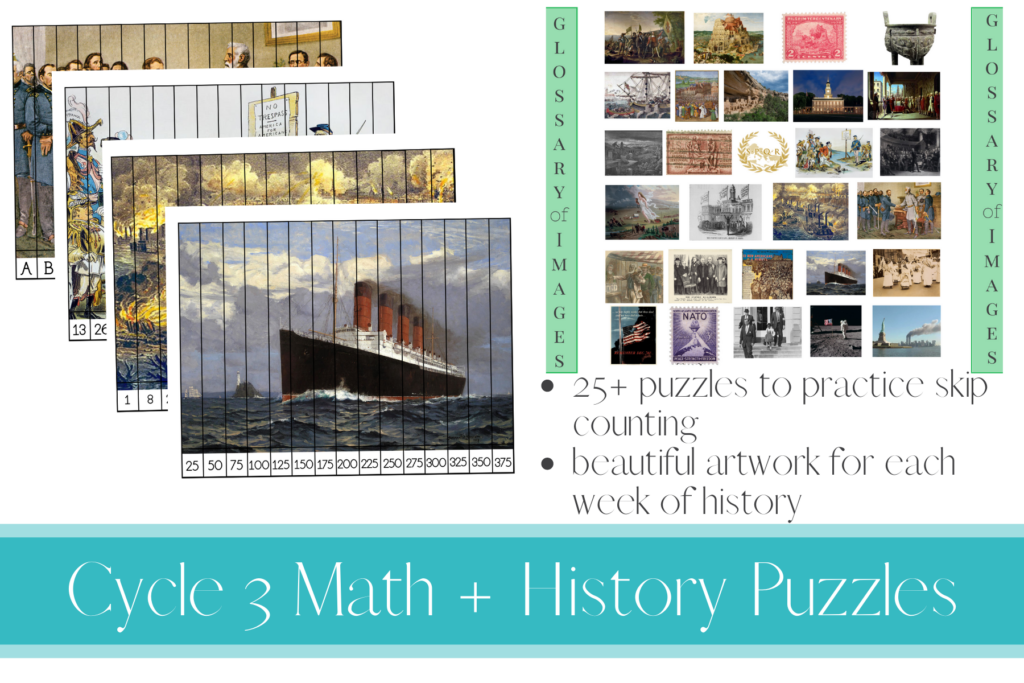
The skip counting cards and Math + History puzzles are available in our Shop.
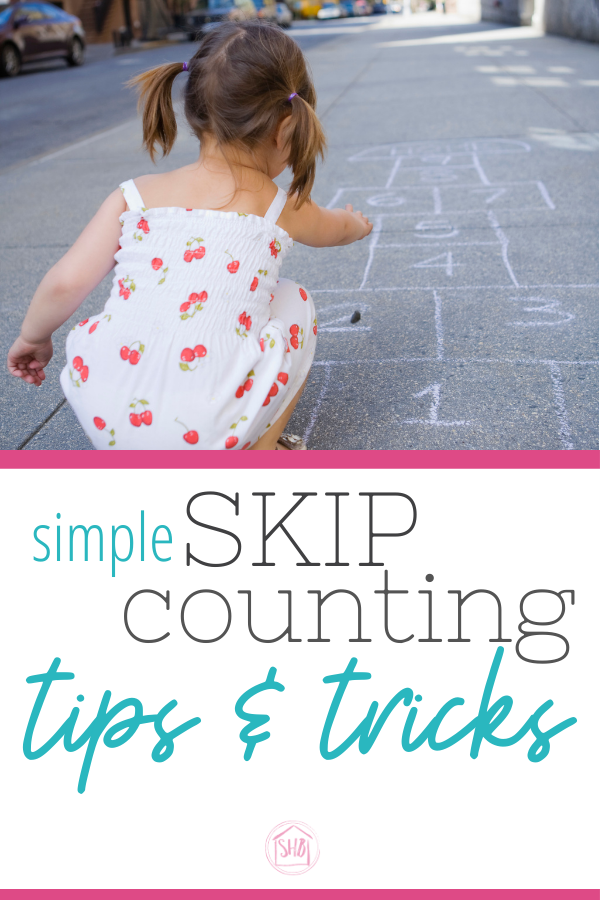




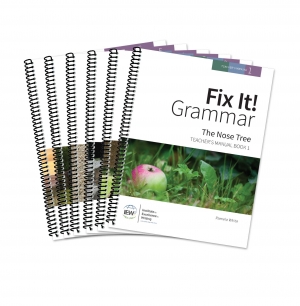


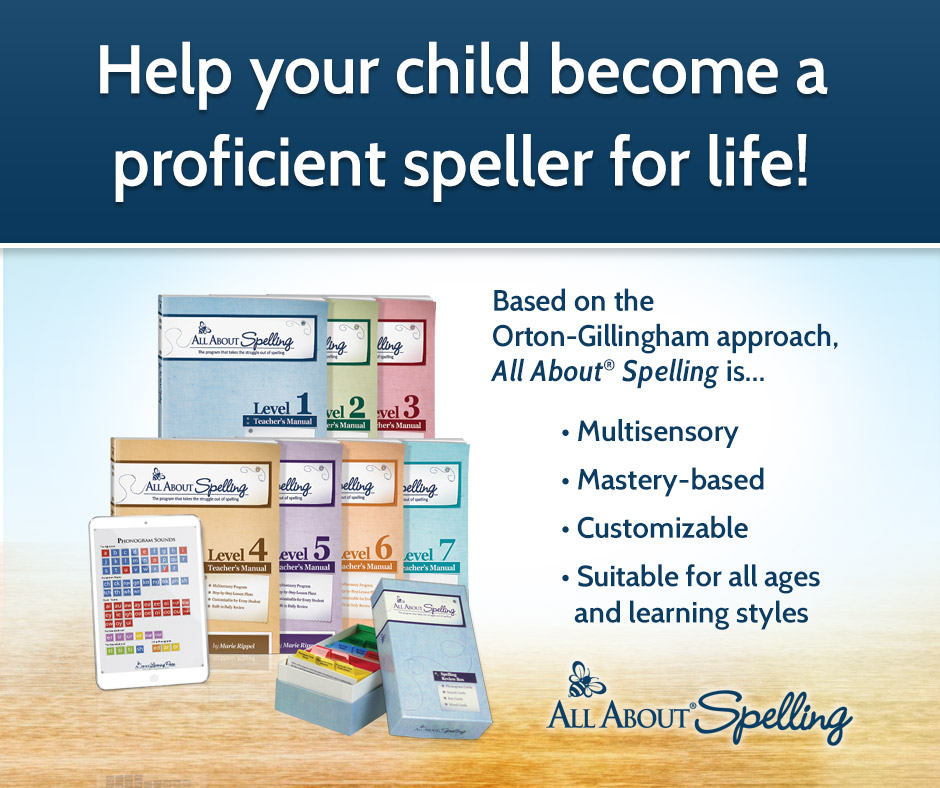






This Post Has 2 Comments
Thanks for making these! They have been so helpful to us. Do you plan to update the rest of the weeks? We would appreciate it!
Thank you for these. I’m hoping this can help my 5 year old. 🙂